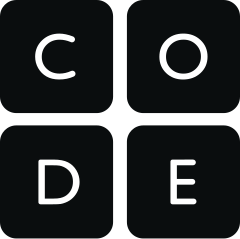Code.org's New Python Curriculum: Preparing Tomorrow's Workforce for an AI-Driven World
The digital divide isn't just about access to technology anymore—it's about understanding the languages that power our increasingly automated world. Code.org's latest curriculum initiative aims to bridge this gap by introducing Python programming and artificial intelligence concepts to students as young as middle school, potentially reshaping how an entire generation approaches technology.
The Stakes: Why Python and AI Matter Now
In boardrooms and classrooms alike, the conversation has shifted from whether AI will transform industries to how quickly that transformation will occur. Python, the programming language that powers much of today's AI development, has become the lingua franca of data science, machine learning, and artificial intelligence applications.
Code.org's new curriculum recognizes this reality. Rather than treating programming as an elective skill, the nonprofit organization—which already reaches over 70 million students globally—is positioning Python literacy as essential as traditional literacy or numeracy.
"We're not just teaching kids to code," explains a Code.org spokesperson. "We're giving them the tools to understand and shape the AI systems that will define their future careers and daily lives."
What's Actually in the Curriculum
The new Python-focused curriculum spans multiple grade levels, with age-appropriate introductions starting in middle school and advancing through high school. Key components include:
Foundational Python Programming: Students learn syntax, variables, loops, and functions through interactive exercises and real-world projects.
Data Analysis Skills: Using Python libraries like pandas and matplotlib, students explore datasets, create visualizations, and draw conclusions from data—skills increasingly valuable across all industries.
AI and Machine Learning Concepts: Without getting lost in complex mathematics, students learn how AI systems work, their limitations, and ethical considerations around their use.
Project-Based Learning: Students build chatbots, analyze social media trends, create recommendation systems, and develop other applications that demonstrate AI's practical applications.
The Timing Advantage
This curriculum launch comes at a critical moment. The U.S. Bureau of Labor Statistics projects that jobs requiring programming skills will grow 13% by 2032—much faster than the average for all occupations. Meanwhile, roles involving AI and machine learning are expanding even more rapidly.
Yet current educational systems lag significantly behind industry needs. A 2023 survey by the Computing Technology Industry Association found that 73% of employers struggle to find candidates with adequate programming skills, while 81% report difficulty finding workers who understand AI applications.
Beyond the Classroom: Real-World Impact
Early pilot programs show promising results. At Jefferson Middle School in California, students using beta versions of the curriculum have already created functional AI applications, including a system that helps identify recyclable materials and a chatbot that provides mental health resources.
"These aren't toy projects," notes Dr. Sarah Chen, a computer science education researcher at Stanford University. "Students are building solutions to real problems in their communities, which reinforces both technical skills and the understanding that technology can be a force for positive change."
Addressing the Skeptics
Critics raise valid concerns about screen time, educational priorities, and whether such technical content belongs in K-12 education. However, proponents argue that understanding AI isn't optional for the next generation.
Consider this: today's middle school students will enter the workforce around 2030, when McKinsey & Company estimates that AI could automate up to 30% of current job activities. Those who understand how these systems work—and more importantly, how to direct and improve them—will have significant advantages.
The Broader Educational Shift
Code.org's initiative reflects a broader recognition that computational thinking and AI literacy represent new forms of civic engagement. Just as democratic participation once required basic literacy and numeracy, effective participation in an AI-driven society demands understanding how algorithmic systems work.
Several states have already begun integrating the curriculum into their computer science standards, with Texas, Florida, and New York leading adoption efforts.
Looking Forward: What This Means for Students and Society
This curriculum represents more than educational innovation—it's workforce preparation at scale. Students who master these skills won't just be better prepared for technology careers; they'll be more informed consumers, citizens, and decision-makers in an AI-influenced world.
As artificial intelligence becomes as common as smartphones in our daily lives, Code.org's initiative ensures that the next generation won't just be passive users of AI systems—they'll be active creators, critics, and improvers of the technology that shapes their world.
